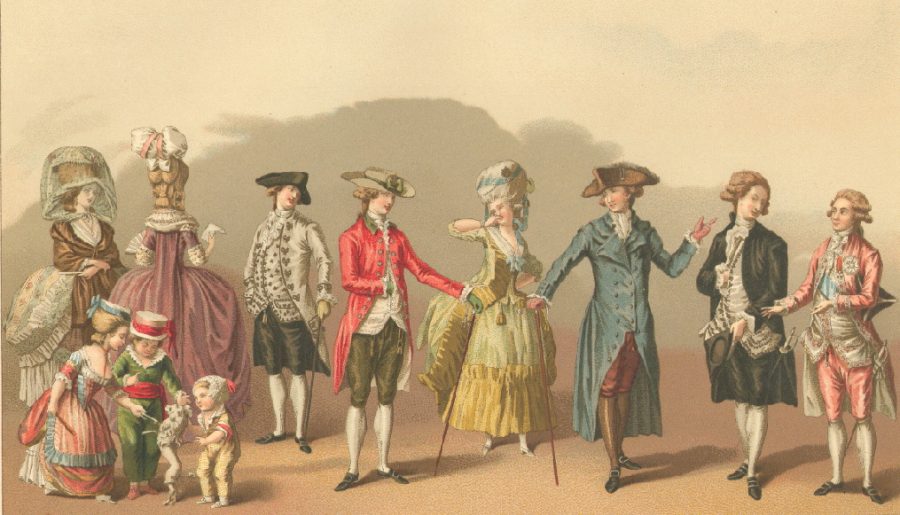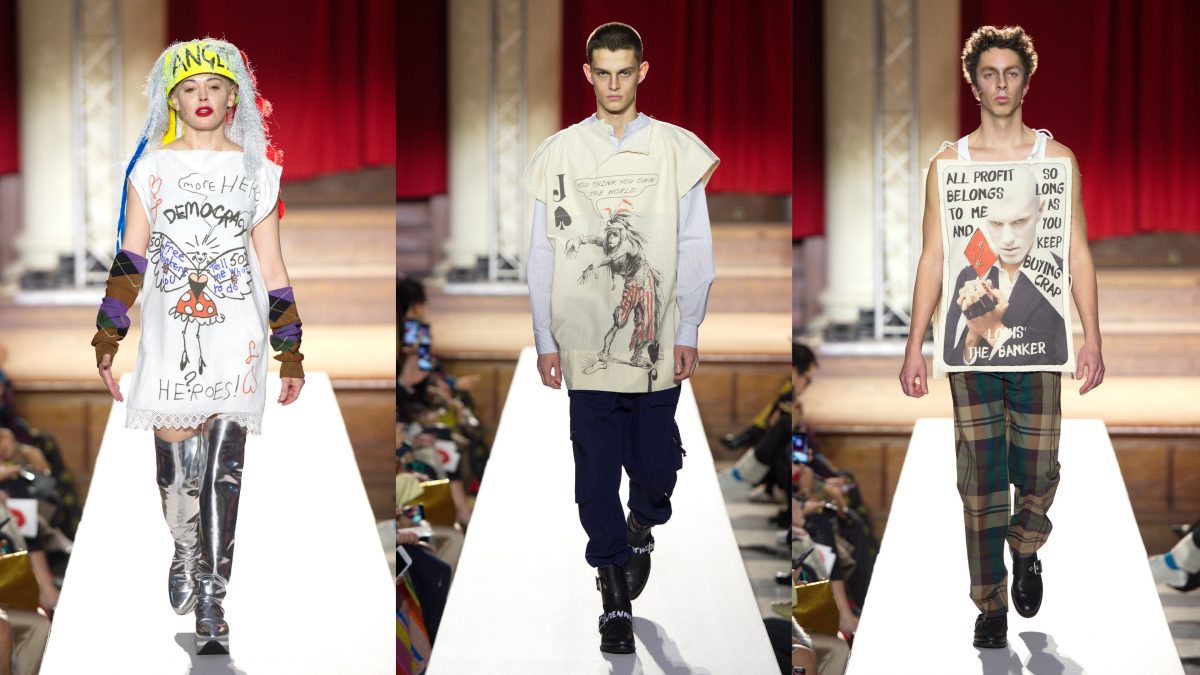
Fashion mirrors society’s aspirations, challenges the norms, and essentially reflects our current climate. Still, the question persists: Should fashion be political? The only correct answer is: Wasn’t it always?
Fashion is one of the most readily available (not to mention accessible) political tool. Style has the potential to disrupt or affirm the status quo. It’s nothing new: fashion and politics have been in a tight, solid relationship for as long as humans have been getting dressed. Most brands, including high end and luxury, should be aware of the significance that garments carry. What people choose to wear on the daily is a part of one’s social and political identity, social movements, class, race, and gender roles.
We’ve compiled a list of prominent activists, celebrities, and other public figures that have used fashion as their main political ground — amid the upcoming social unrest that the American elections will ultimately cause in the next weeks.
Fashion during the French Revolution:

The fashion etiquette that had originally been constructed by Sun King Louis XIV and his cohorts was deeply affected following the French Revolution. During the 18th century, this absolutist system had grown extremely corrupt, and what followed were fashion choices that aimed to support or condemn revolutionary change.
The Revolution moved to condemn elements of traditional aristocratic styles such as velvets and expensive silks. Revolutionaries had completed the condemnation of the aristocracy by wearing sans-culottes—literally, “without knee breeches”, a trend that the aristocrats would never get behind. Revolutionaries wore articles of clothing similar to the fashion of laborers—loose-fitting and coarse cotton clothing.
By the end of the 1790s, a new revolutionary style began to swarm the streets. Fashion extremists wore outrageous outfits—tight, cut-tail coats, cropped pants, and striped fabrics—all of which indicated the instability of France at that particular time. One thing about the French, they sure know how to form a revolution!
1795-Mid 1800’s—Loose Dresses and Loose Tresses

Perhaps it was this point in time when fashion became really defined. Prior to this century, clothes weren’t used as a term of self-expression. By 1750, however, the consumer revolution brought about more affordable fashion options and styles, thus, fashion became an expression of individuality. The constant change of fashion emulated the political and social ideals of Enlightenment philosophies.
During the majority of the 18th century and the rest of the 19th century, women’s garments generally included tight-fitting tops, such as corsets, and heavily skirted bottoms, hoop skirts, panniers, and the like. Around this time, however, more and more women began to embrace styles inspired by the Greeks and Romans, which extensively accentuated their natural waistlines, accompanied by loose-fitting clothing. This was a harsh change in this century as women of all body types began to be embraced.
In addition to loose dresses, we also saw the embrace of loose tresses further into the century. Again, heavily influenced by the Greeks and Romans, women’s hair was often gathered at the top with loose tendrils of hair framing the face. Conservative married women still continued to wear mob caps with wide brims. During this era, daringly fashionable women would leave the house without bonnets or hats, which used to be previously associated with sex workers.
The Famous Bloomers Go Public–

Let’s be honest, a woman’s body will always be talked about in our societies, but nothing quite like the implementation of bloomers. Amelia Bloomer, an advocate for women and fashion, styled loose pants in order for women to feel more mobile and less restrictive. The bloomer meant revolution for women and contributed fully to the feminist movement of the 19th century. Interestingly enough, Amelia Bloomer did not create the famous bloomer, but she was a large proponent for comfort and wore the pants to feel less restricted. Bloomer also suggested that dresses and corsets posed a health hazard for women and sought dress reform.
The bloomers became a way to identify women’s suffrage activists—sound familiar?
2010—France Banned the Burqa

Skipping over a couple of centuries of revolutions, in October of 2012, France cleared the last legal process needed to ban Islamic face coverings in public areas. Not only was this widely controversial for the wrong reasons, but it also imposed on Muslim Women’s rights to their bodies. The Burqa and Hijab are worn for religious purposes and aren’t regarded as a fashion statement. Women fought back in protest by walking the streets of Paris fully veiled. The United Nations Human Rights Committee declared that this ban disproportionately harmed the right of women to manifest their beliefs which confined them to their homes and impeded their access to public services.
2014-2020—NBA Players’ Tribute to Black Lives Lost

The sports industry has always had a history of intersecting with politics but nothing really compares to the moment in 2014 when several teams across the nation used stadium time to honor Eric Garner, who became another Black life lost at the hands of police after being choked while screaming “I can’t breathe”. Derrick Rose of the Chicago Bulls sported an “I Can’t Breathe” t-shirt during warm-ups. LeBron James, Kyrie Irving, Kevin Garnett, Damian Lillard and many other players wore the same t-shirt and even participated in marches. Even in the NBA bubble, nothing is stopping players from showing their support of the Black Lives Matter Movement.
Let’s not forget about the time Laura Ingraham told LeBron James to quit politicizing sports and to “shut up and dribble”. Professional athletes have encountered first hand how garments are politicized heavily in America.
Current—

Protest culture is alive and well. We see it on TV all the time. We see it on our Twitter timelines and Instagram feeds. Just like our ancestors, protest culture helped unify youth by showing anti-establishment reform. It is balaclavas and shirts with hashtags that unify a population. Even before this, the Black Panthers used clothing to seize power and resist it, adopting a uniform of leather jackets and berets to signify the fight against the police system.
Additionally, the runway seems to highlight protest culture. Vivienne Westwood is exceptional at leading phenomenal protests during her catwalks. In February of 2019 during London Fashion Week, Westwood’s models wore aprons and tabards with climate change slogans and anti-consumerist mottos. Her show happened at around the same time as the environmental action group Extinction Rebellion assembled at several London Fashion Week venues to highlight consumerism and the “throwaway” nature of the industry.
Congresswoman Alexandria Ocasio-Cortez of The Bronx also appreciates an outfit that does more than just look appealing to the eyes. She revealed that Associate Justice Sonia Sotomayor was the inspiration behind the all-white outfit she chose to wear for her swearing-in ceremony. Ocasio-Cortez tweeted: “Lip+hoops were inspired by Sonia Sotomayor, who was advised to wear neutral-colored nail polish to her confirmation hearings to avoid scrutiny. She kept her red.” Another tweet reveals that her all-white suit paid homage to the women who paved the path before her, “From suffragettes to Shirley Chisholm, I wouldn’t be here if it wasn’t for the mothers of the movement.”
Fashion undoubtedly functions as a mirror to our times, it is inherently political. It has been used as a form of revolution as well as to represent people’s class, race, ethnicity, gender, and sexuality. Fashion isn’t just about making clothes—it’s about making change.


